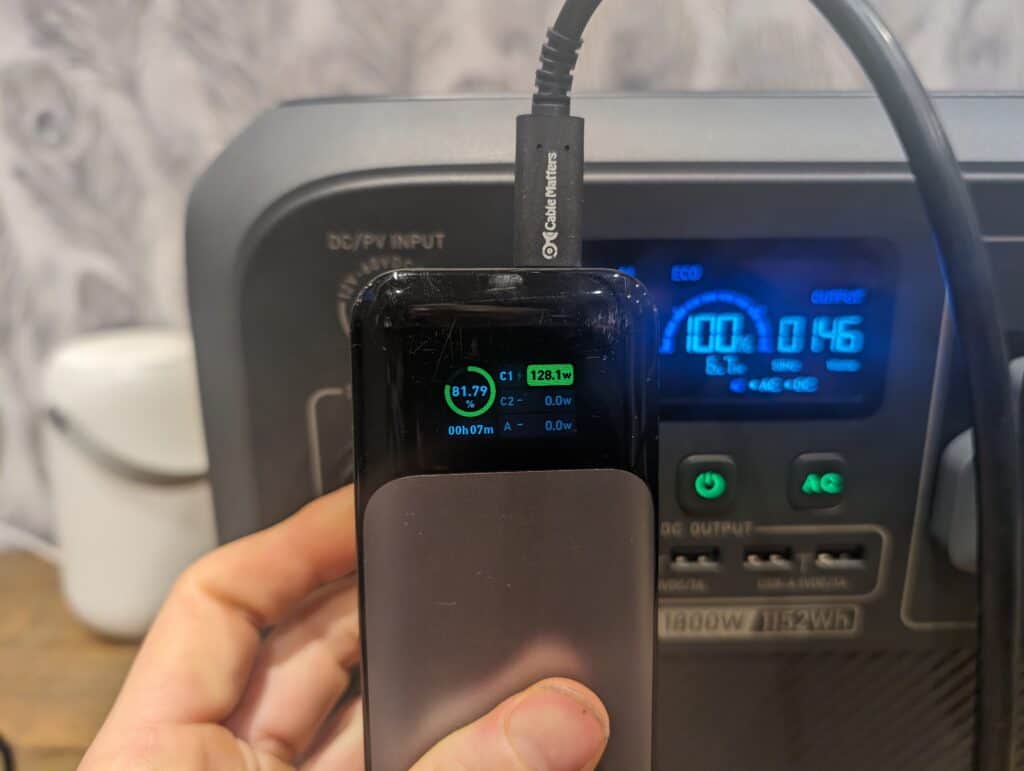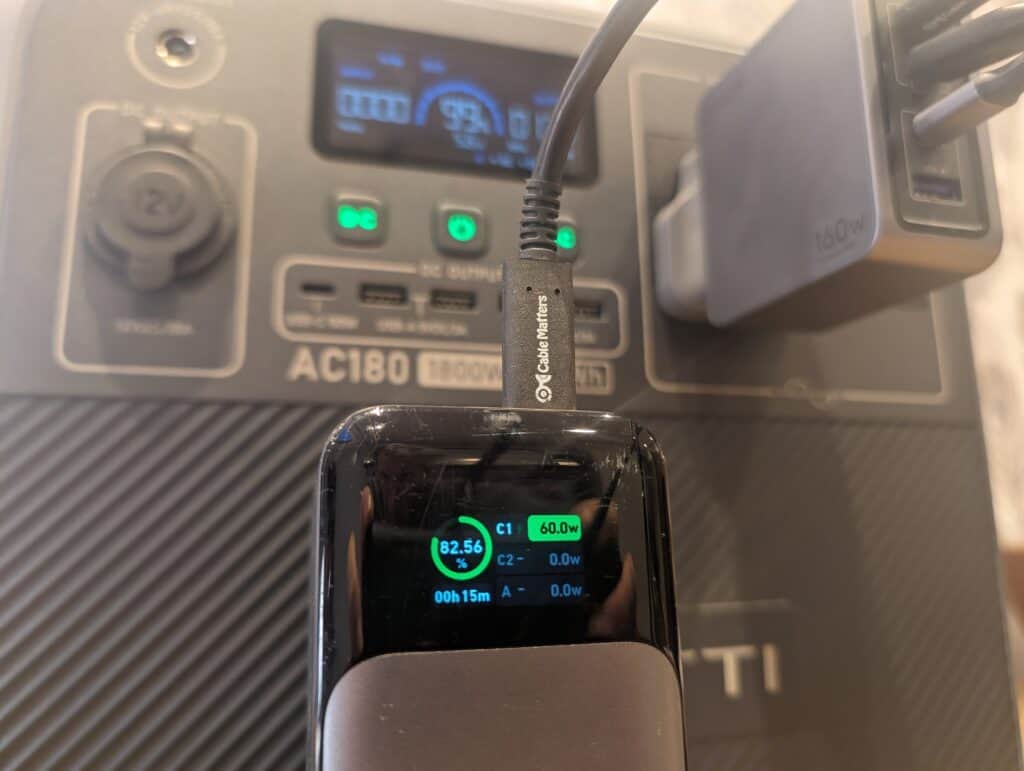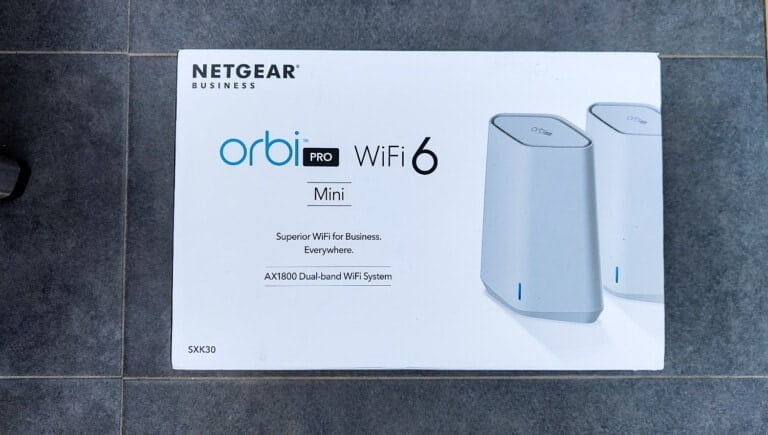Any links to online stores should be assumed to be affiliates. The company or PR agency provides all or most review samples. They have no control over my content, and I provide my honest opinion.
I have been a big fan of Ugreen recently, and I think they are one of the best companies for USB peripherals, such as power delivery chargers, USB hubs, and power banks.
Out of their Nexode range, I have previously reviewed the Nexode 300W 5-Port PD GaN Desk Charger and the 3-port Nexode 140W. Both are superb if you have devices with high power delivery requirements, such as the 16-inch MacBook Pro.
Ugreen is now introducing a Pro range of Nexode chargers, which use a new technology called AirPyra, which allows Ugreen to produce smaller plugs with a similar or higher wattage output.
| Preview | Product | Rating | Price | |
|---|---|---|---|---|

| UGREEN USB C Charger 100W Fast Charger USB C Plug Nexode Pro... |
£41.99 | Buy on Amazon | |

| UGREEN 160W USB C Charger, Nexode Pro 4-Port PD 3.1 Compact... |
£84.99 | Buy on Amazon |
Ugreen Nexode Pro Features

All the Ugreen Nexode Pro plugs share some similar features that differentiate them from the non-Pro models:
- Smaller Design
- Nexode Pro has a new generation of electronic stacking technology – AirPyra Tech, which is smaller than traditional chargers.
- Higher Efficiency
- Nexode Pro uses a high-performance chip for higher charging efficiency.
- Stylish Design
- Nexode Pro features a square contour and rounded edges for a comfortable touch. The high-end metallic paint craftsmanship endows it with exquisite visual impact.
- A Commitment to a Greener World
- According to Navitas Semiconductor, every GaN chip made can reduce CO2 emissions by 4kg compared to traditional silicon chips. Statistically, in 2023 our chargers will reduce CO2 emissions by nearly 12,000 tons. This is equivalent to the amount of CO2 generated by the annual electricity consumption of over 1,300 coal-fired power stations, or 950 million households.
- GaN Chips save on average 12,000tons of C02 ≈ CO2 Absorbed by 660,000 Trees Per Year
Ugreen Nexode Pro X763 Specification 160W with 4 Ports

- Ultra Fast 160-watt Charging: Single USB C1 port outputs 140W, charge a MacBook Pro 16” from 0 to 86% in 60 minutes.
- Charge 4 Devices at Once: 3x USB-C ports and 1x USB-A port 160W Charger replaces gigantic AC adapters and phone charging bricks.
Ports
- Input:100-240V~50/60Hz 2.3A Max
- USB-C1 Output: 5.0V⎓3.0A /9.0V⎓3.0A /12.0V⎓3.0A /15.0V⎓3.0A /20.0V⎓5.0A/28.0V⎓5.0A 140.0W Max
- USB-C2 Output: 5.0V⎓3.0A /9.0V⎓3.0A /12.0V⎓3.0A /15.0V⎓3.0A /20.0V⎓5.0A 100.0W Max
- USB-C3 Output: 5.0V⎓3.0A /9.0V⎓3.0A /12.0V⎓2.5A 30.0W Max
- USB-A Output:5.0V⎓3.0A/9.0V⎓2.0A/12.0V⎓1.5A/10.0V⎓2.25A 22.5W Max
- Total Output Power:160.0W Max

Ugreen Nexode Pro X757 Specification 100W with 3 Ports

- Super Fast 100-watt Charging: Single USB C1 port outputs 100W, charge a MacBook Pro 14” from 0 to 86% in 60 minutes
- Airpyra Tech with GaNInfinity Tech: similar size to the Nexode 65W, fits in the palm. 37% higher energy density compared to Nexode 100W.
- Charge 3 Devices at Once: 2x USB-C ports and 1x USB-A port provide a combined 100-watts of charging power for up to 3 devices.
Ports
- Input:100-240V~ 50/60Hz 1.8A Max
- USB-C1 Output:5.0V⎓3.0A /9.0V⎓3.0A /12.0V⎓3.0A /15.0V⎓3.0A /20.0V⎓5.0A 100.0W Max
- USB-C2 Output:5.0V⎓3.0A /9.0V⎓3.0A /12.0V⎓2.5A 30.0W Max
- USB-A Output:5.0V⎓3.0A/9.0V⎓2.0A/12.0V⎓1.5A/10V=2.25A 22.5W Max
- Total Output Power:100.0W Max
Design
There is not a great deal to say about the overall design and build quality. The build quality is excellent as far as I can tell, and I have personally been using the Nexode 140W daily since I reviewed it back in 2022, and it has worked perfectly.
Ugreen uses a narrow design to reduce the risk of the plugs overlapping when used with double sockets or power strips. For two-pin plugs used in the EU and US, this can present some problems with the plug being quite heavy and not staying in the socket properly. In the UK, with our superior 3-pin type G plugs, this is not a concern at all.
I don’t have a 100W Nexode to compare for size differences, but you can see that the 140W Nexode is clearly larger than the 160W Nexode Pro and Ugreen have managed to squeeze in and additional USB-C port.
In-Use

In the above pictures, you can see the power distribution of the two plugs.
With the 100W, you can achieve 100W on a single port or up to 65W/30W with two ports and 65W/15W/15W on three.


With the 160W, you get 140W on a single port, 100W/60W on two, 65W/65W/30W on three and 65W/65W/15W/15W on four.
Testing this with the Anker 737 Power Bank (PowerCore 24K) and a USB4 cable rated for 240W, I can confirm that both plugs are capable of their peak output.
I also tested with the Ugreen 145W 25000mAh Power Bank, ZHIYUN MOLUS X100 (100W) and Huawei Matebook 14; I was able to achieve the advertised outputs for the different port combinations.
In the images, the portable power station reports a higher power output, which I assume is due to the inefficiencies of using a battery.

Price and Alternative Options
| Preview | Product | Rating | Price | |
|---|---|---|---|---|

| UGREEN USB C Charger 100W Fast Charger USB C Plug Nexode Pro... |
£41.99 | Buy on Amazon | |

| UGREEN 160W USB C Charger, Nexode Pro 4-Port PD 3.1 Compact... |
£84.99 | Buy on Amazon |
The Ugreen Nexode Pro Series official RRP vs the previous generation Nexode series is:
As you can see, the Ugreen Nexode Pro Series is obviously better than the previous generation. You get smaller plugs for the same power output, or with the Nexode Pro 160W, it is slightly smaller but has more ports and a higher total output.
For other brands, Anker has the Anker Prime 100W GaN Wall Charger (3 Ports) listed at £80 RRP but available for £54.99.
If you look at the dimensions, the Anker is 34% smaller in volume than the 100W Nexode and the Nexode Pro is only 3% smaller in volume than the Anker.
Again, the original Nexode, provides better value for money, but in a larger package.
Overall
I have always been a fan of high-watt power delivery plugs with multiple ports. I have them dotted around my home, plus spares are always stored in travel bags. They are an incredibly convenient accessory to have, allowing me to charge my laptop, phone, tablet, and Garmin watch all at the time.
I don’t think I have experienced a bad plug from any of the brands I have used. You do, of course, have to be wary of the various output voltages and amps each plug supports and if it supports things like PPS and Samsung 45W Super Fast Charging 2.0. All of these are supported with Ugreen Nexode Pro.
For me, the main thing it all comes down to the ports, power output, and value for money.
Both of these Ugreen Nexode Pro GaN chargers are excellent, but the RRP is higher than the previous generation, which makes them less appealing, in my opinion.
However, they haven’t launched at RRP. The 100W is listed at £65 but has a £12 off voucher available, taking it to £53. The 160W model is reduced to £97.99.
The previous generation 100W is £42, and the 140W model is £80 and comes with a 240W cable.
Therefore, the Ugreen Nexode Pro doesn’t represent the same value for money as the older generation, but it is not a significant price difference.
The Ugreen Nexode Pro are quite a bit smaller than the previous generation, and this is worth considering, especially for travel.
Overall, as usual with Ugreen, the Nexode Pro series gets an easy recommendation for me, they are excellent Power Delivery chargers, but it is worth looking at the available discounts with the various Nexode chargers and finding something that suits you needs best.
Ugreen Nexode Pro GaN Fast Charger Review
Overall
85%-
Overall - 85%85%
I am James, a UK-based tech enthusiast and the Editor and Owner of Mighty Gadget, which I’ve proudly run since 2007. Passionate about all things technology, my expertise spans from computers and networking to mobile, wearables, and smart home devices.
As a fitness fanatic who loves running and cycling, I also have a keen interest in fitness-related technology, and I take every opportunity to cover this niche on my blog. My diverse interests allow me to bring a unique perspective to tech blogging, merging lifestyle, fitness, and the latest tech trends.
In my academic pursuits, I earned a BSc in Information Systems Design from UCLAN, before advancing my learning with a Master’s Degree in Computing. This advanced study also included Cisco CCNA accreditation, further demonstrating my commitment to understanding and staying ahead of the technology curve.
I’m proud to share that Vuelio has consistently ranked Mighty Gadget as one of the top technology blogs in the UK. With my dedication to technology and drive to share my insights, I aim to continue providing my readers with engaging and informative content.
Last update on 2025-07-01 / Affiliate links / Images from Amazon Product Advertising API








GaN isn’t magic, its impossible to ever have 100% conversion efficiency. So it pulling 105W when outputting 100W is actually pretty good.
That said, how accurate the current monitoring is on the power bank is also a question. There’s always a certain percentage margin of error so I’d always assume it may be reporting slightly less than is really being pulled. I have a few UPS units that will report 0W when I know at least a couple of watts is actually being consumed.